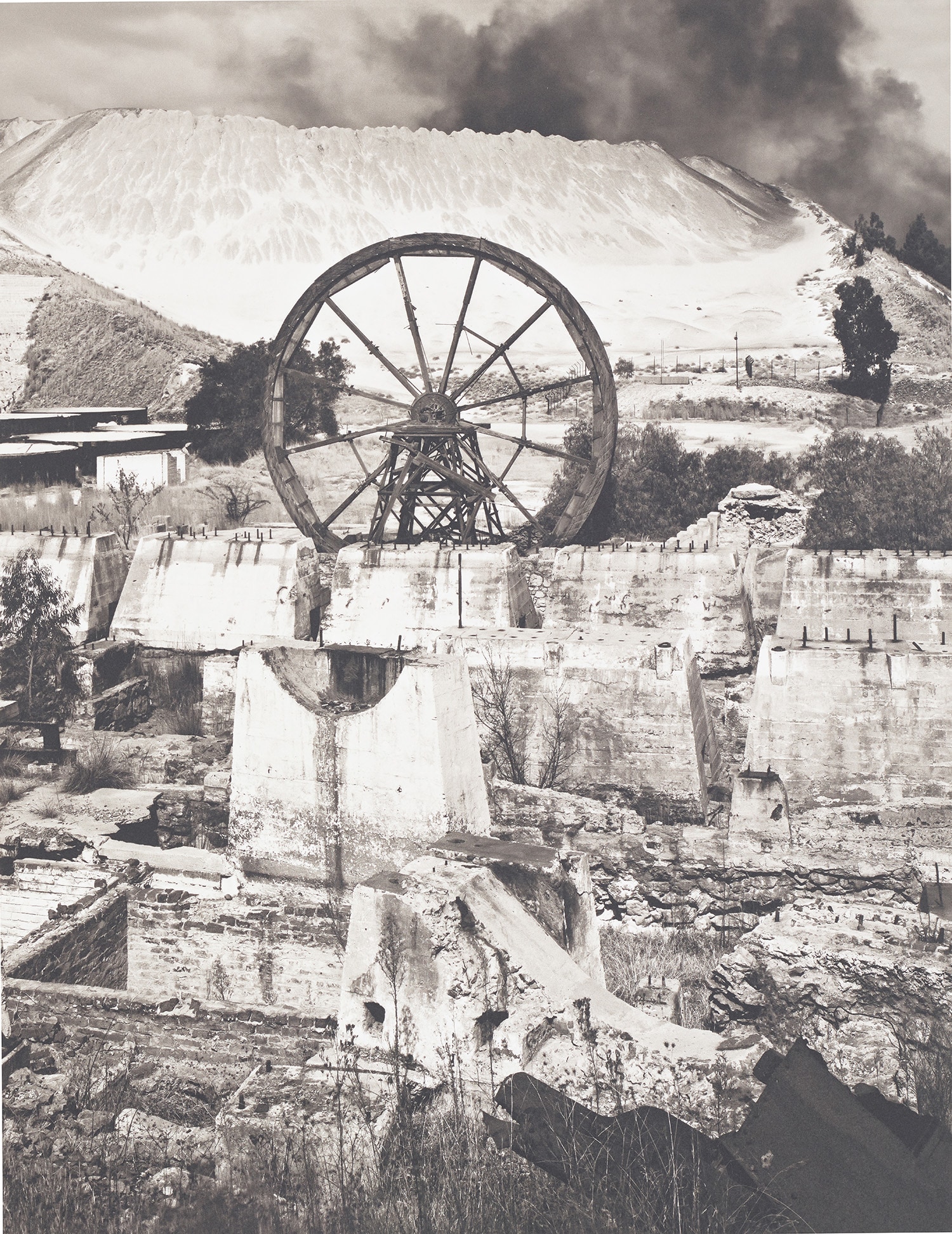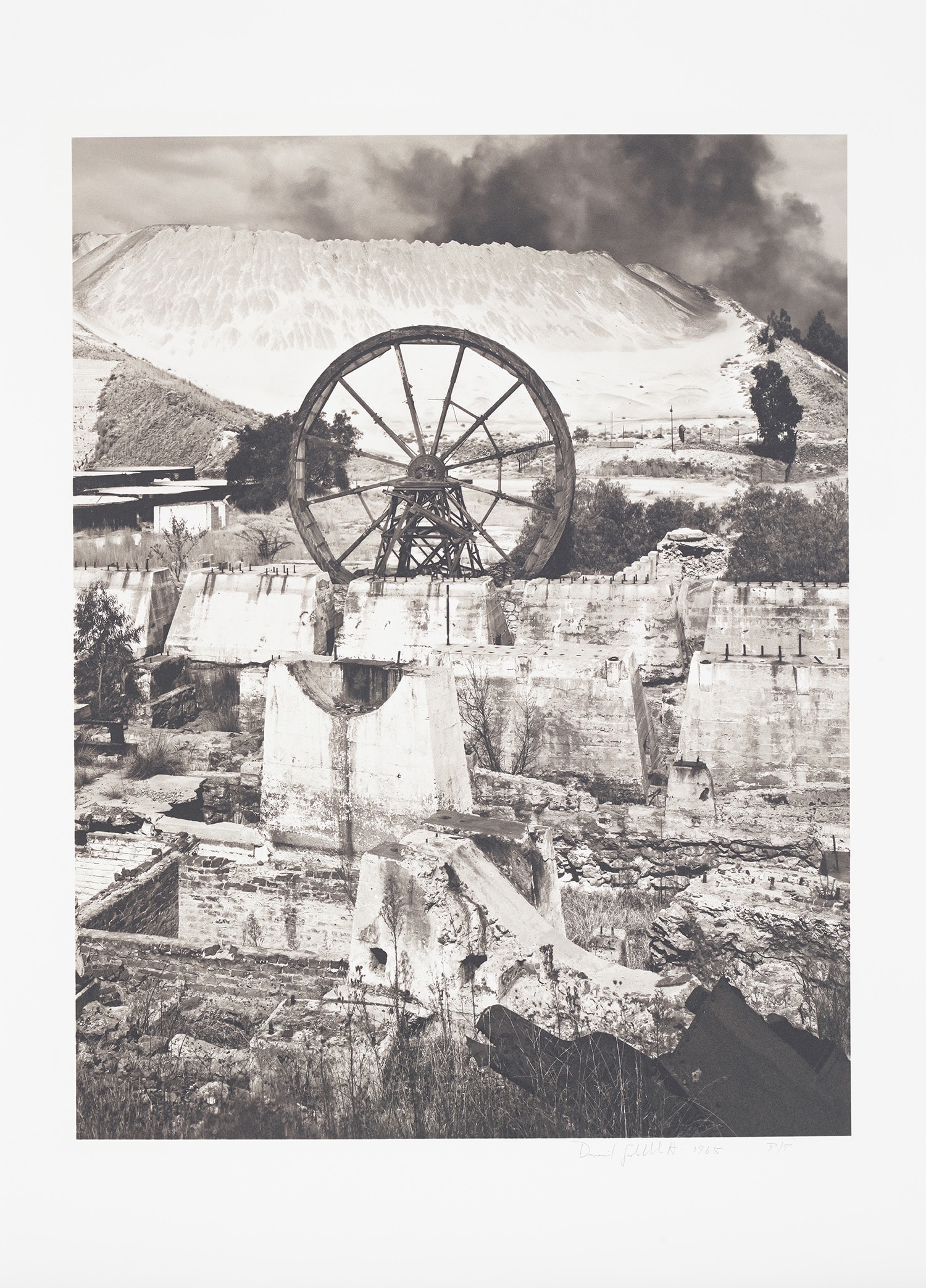



ULTIMATE
36
David Goldblatt
Old mill foundations, tailing wheel and sand dump, Witwatersrand Deep Gold Mine, Germiston
August 1966
Platinum-palladium print, printed later.
Image: 59 x 45.7 cm (23 1/4 x 17 7/8 in.)
Sheet: 76.3 x 55.4 cm (30 x 21 3/4 in.)
Sheet: 76.3 x 55.4 cm (30 x 21 3/4 in.)
Signed, dated and annotated ‘P/P’ in pencil in the margin.
This work is PP from the sold-out edition of 4 + 1 AP + 1 PP.
This work is PP from the sold-out edition of 4 + 1 AP + 1 PP.